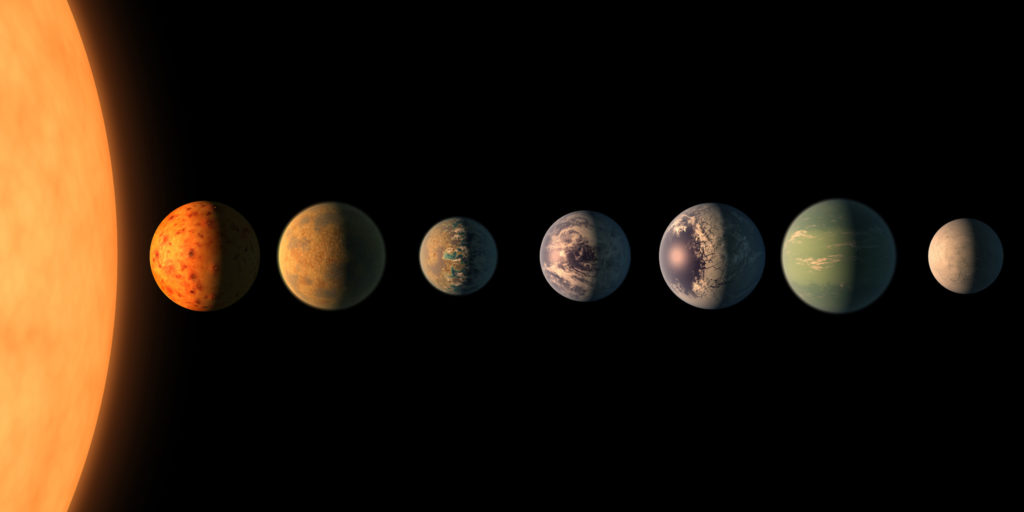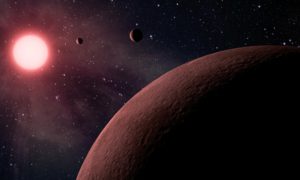All about NASA’s exoplanets discovery


Discovery Image credit: NASA/JPL-Caltech
The National Aeronautics and Space Administration (NASA) on Wednesday (Feb 22) announced that it has discovered seven Earth-size exoplanets (planets which orbit a star outside the solar system).
Here is everything you need to know about the latest exoplanets discovery by NASA:
1. NASA’s Spitzer Space Telescope has discovered the first known system of seven Earth-size planets around a single star.
2. Out of the seven, three planets are “firmly located in the habitable zone, the area around the parent star where a rocky planet is most likely to have liquid water,” says NASA in a release.
3. NASA claims that this new discovery has set a new record for having the maximum number of habitable-zone planets orbiting a single star outside our solar system.
4. NASA says all the seven exoplanets could have liquid water under proper atmospheric conditions, though chances are highest in three of the exoplanets.
5. Thomas Zurbuchen, associate administrator of NASA’s Science Mission Directorate in Washington, says: “This discovery could be a significant piece in the puzzle of finding habitable environments, places that are conducive to life. Answering the question ‘are we alone’ is a top science priority and finding so many planets like these for the first time in the habitable zone is a remarkable step forward toward that goal.”
6. The exoplanets are just about 40 light-years (235 trillion miles) from Earth in the constellation Aquarius.
7. This exoplanet system is called TRAPPIST-1, named for The Transiting Planets and Planetesimals Small Telescope (TRAPPIST) in Chile.
8. Going by their densities, all TRAPPIST-1 planets are likely to be rocky.
9. NASA is yet to estimate the mass of the seventh and farthest exoplanet. However, scientists are assuming that it could be an icy, “snowball-like” world.
———————————————
You may like to read
Why we should track Union Budget for FY18
—————————————————-
10. Unlike the sun, the TRAPPIST-1 star is an ultra-cool dwarf that leaves the possibility of the survival of liquid water on planets that are really close to it.
11. All seven TRAPPIST-1 planetary orbits are closer to their host star than even Mercury, which is the closest to the sun in our solar system.
12. NASA scientists believe that the exoplanets might be tidally locked to their star. This means one particular side is always facing the star and hence it is perpetual day in that side of the exoplanet, while the other side experiences perpetual night.
13. This leaves NASA scientists conclude that the weather conditions on the exoplanets might be not too favourable unlike our Earth. There might be extreme temperature changes with strong winds blowing from the day side to the night side.
Big Wire








































